IN THE TWO YEARS AND 308 DAYS THAT DONALD Trump has been president, he has constructed zero miles of wall along the southern border of the United States. He has, to be fair, replaced or reinforced 76 miles of existing fence and signed it with a sharpie. A private group has also built a barrier less than a mile long with some help from Steve Bannon and money raised on GoFundMe. But along the 2,000 miles from Texas to California, there is no blockade of unscalable steel slats in heat-retaining matte black, no electrified spikes, no moat and no crocodiles. The animating force of Trump’s entire presidency—the idea that radiated a warning of dangerous bigotry to his opponents and a promise of unapologetic nativism to his supporters—will never be built in the way he imagined.
And it doesn’t matter. In the two years and 308 days that Donald Trump has been president, his administration has constructed far more effective barriers to immigration. No new laws have actually been passed. This transformation has mostly come about through subtle administrative shifts—a phrase that vanishes from an internal manual, a form that gets longer, an unannounced revision to a website, a memo, a footnote in a memo. Among immigration lawyers, the cumulative effect of these procedural changes is known as the invisible wall.
In the two years after Trump took office, denials for H1Bs, the most common form of visa for skilled workers, more than doubled. In the same period, wait times for citizenship also doubled, while average processing times for all kinds of visas jumped by 46 percent, even as the quantity of applications went down. In 2018, the United States added just 200,000 immigrants to the population, a startling 70 percent less than the year before.
Before Trump was elected, there was virtually no support within either party for policies that make it harder for foreigners to come here legally. For decades, the Republican consensus has favored tough border security along with high levels of legal immigration. The party’s small restrictionist wing protested from the margins, but it was no match for a pro-immigration coalition encompassing business interests, unions and minority groups. In 2013, then-Alabama Senator Jeff Sessions introduced an amendment that would have lowered the number of people who qualified for green cards and work visas. It got a single vote in committee—his own. As a former senior official at the Department of Homeland Security observed, “If you told me these guys would be able to change the way the U.S. does immigration in two years, I would have laughed.”
Senior adviser Stephen Miller is usually regarded as the White House’s immigration mastermind, but his maneuvering is only a sliver of the story. The most fine-grained and consequential changes would never have been possible without a group of like-minded figures stationed in relevant parts of the government—particularly the United States Citizenship and Immigration Service, the agency within DHS that administers visas. Early in Trump’s presidency, said the former DHS official, there was a “strategic sprinkling” of people who “shared a common vision and were ready to outwork everybody.” They included Gene Hamilton, Miller’s “terrible sword at DHS” (his actual title was senior counselor to the secretary), and Francis Cissna, the soft-spoken former head of USCIS whom colleagues describe as “an encyclopaedia of immigration law” and “a total immigration nerd.” “If you said to him, what’s on page 468, second paragraph” of the Immigration and Nationality Act, another former DHS official marveled, “he would quote it to you.”
Amidst the chaos at DHS, the restrictionists have already radically scaled back America’s asylum and refugee programs for years to come. But no category of immigrant has escaped the uptick of denials and delays—not the Palestinian student with a Harvard scholarship who was deported upon landing in Boston, or the Australian business owner forced to leave after building a life here. Not the Bolshoi Ballet stars who somehow failed to meet the criteria of accomplished artists, or the Iraqi translators who risked their lives for the U.S. military and whose annual admissions went from 325 to just two after the change in administration. Then there are the consequences that are harder to capture in headlines or statistics: the couples whose marriages broke down when the foreign spouse was forced to wait far longer than usual in their home country, and the unknown number of people who have abandoned the attempt to stay because of financial hardship or the strain of living with a level of uncertainty that becomes untenable.
“What became clear to me early on was that these guys wanted to shut down every avenue to get into the U.S.,” the first former senior DHS official said. “They wanted to reduce the number of people who could get in under any category: illegals, legals, refugees, asylum seekers—everything. And they wanted to reduce the number of foreigners already here through any means possible.” No government in modern memory has been this dedicated to limiting every form of immigration to the United States. To find one that was, you have to go a long way back, to 1924.
German-Jewish refugees aboard the MS St. Louis, which was turned away from the United States and Cuba in 1939. (Bettmann via Getty)
“ANATION OF IMMIGRANTS”—THESE FOUR WORDS, genius in their concision, mask the messiest of histories. People like to recall that George Washington wanted America to “be an Asylum to the persecuted of the earth.” Less often praised: Ben Franklin’s contention that immigrants are “the most ignorant Stupid Sort of their own Nation.” Americans have been having some version of this argument ever since. And for much of the country’s existence, public opinion towards immigration has ranged from tepid to hostile. As Daniel Tichenor, author of the comprehensive history, “Dividing Lines,” puts it, “We love the immigrant past and dread the immigrant present.”
One rare exception came after the Civil War, when the country was desperate to replace the men who had died on the battlefield. A flourishing postwar confidence revived the idea that the country could absorb a never-ending stream of foreigners and fuse their best characteristics into that superior being, an American.
The turn began in the 1880s. Extremes of wealth had sparked massive labor strikes; out West, people fretted that the land was running out. Now, newcomers were a threat, and the more foreign they seemed, the more threatening they were. An early warning was the Chinese Exclusion Act of 1882, the first-ever prohibition of all people of a specific race. Over the next decade, a surge of European migrants accounted for 40 percent of population growth. From the 1890s, this wave was dominated not by English, Scandanavians, Germans or Irish, but by poorer southern and eastern Europeans and Russian Jews. As the country slid into a long depression, the new immigrants became the source and the target of a tinderbox anxiety. There were lynchings of Italians in New Orleans; attacks on Jewish farmers by Mississippi nightriders; a riot against Russian Jewish factory workers in New Jersey.
For decades, nativists in Congress tried and failed to translate this hostility into new immigration laws. It wasn’t until the early 1920s, after Warren Harding was elected president on an “America First” platform, that two Republican lawmakers, Representative Albert Johnson and Senator David Reed, finally realized a restrictionist dream: a comprehensive racial quota system devised to keep American bloodlines pure. “[T]he country would never be the same,” wrote John Higham in his definitive account of American nativism, “Strangers in the Land”—“either in its social structure or in its habits of mind.”
To build the public case for their legislation, Johnson and Reed teamed up with the leading eugenicists of the day. Johnson enlisted Harry Laughlin, who in 1936 received an honorary degree from a German university for his contributions to the “science of racial cleansing,” to conduct research for the House Immigration Committee. Johnson also worked closely with Madison Grant, whose manifesto, “The Passing of the Great Race,” is a deranged codification of white men into three “races” of descending desirability—Nordics, Alpines and Mediterraneans. Grant’s conclusion, drawn from spurious analyses of skull shape and nose width, was that the new immigrants should be scientifically excluded from the definition of whiteness. They were “human flotsam … breeding out their masters and killing by filth and by crowding as effectively as by the sword.”
In 1924, President Calvin Coolidge signed the Johnson-Reed Act, which accorded with his own belief that that “America must be kept American.” The law would ultimately shut down most immigration except for a meager inflow dominated by people Madison Grant would have called Nordics. Everyone else faced waitlists of 10 to 75 years, depending on the quota allotted to their country of origin. The law also birthed a national immigration bureaucracy—what Tichenor calls “an increasingly elaborate immigration control system of racist design.”
Until this point, nearly everyone who arrived at a port of entry like Ellis Island was admitted to the United States. There was no requirement for a visa. Johnson-Reed was deliberately engineered to prevent most immigrants from ever boarding a steamship, by requiring them to obtain visas from U.S. consulates abroad. The State Department, which ran the consulates, was notoriously anti-Semitic: In 1921, the chief of the Consular Service supplied a report to Congress describing Jewish people as “filthy, un-American, and often dangerous in their habits.” By the 1930s, as Hitler launched his assault on the Jews of Europe, the new visa system was perfectly calibrated not to help the growing ranks of refugees, but to keep them out.
In 1934, President Franklin Roosevelt ordered consulates to give Jewish refugees “the most humane and favorable treatment possible under law.” After that, admissions actually went down. Mere presidential preference was no match for the immigration bureaucracy, which erected, in the words of historian David Wyman, a formidable “paper wall.”
The paper wall’s architect was Samuel Miller Breckinridge Long—Breckinridge Long to the public. Thin and rangy, intermittently beset by nervous ailments, Long was born to a family that was practically Confederate aristocracy. He’d glided through Princeton, married into money and spent a good deal of his career as a bureaucrat of middling talents. Thanks to his old pal “Frank” Roosevelt, in 1939 he was put in charge of refugee admissions, though he had no relevant experience. From then on, Roosevelt essentially abdicated refugee policy to Long because he was so spooked by the politics: In 1938, the year of Kristallnacht, 86 percent of Americans opposed an emergency increase of refugee admissions.
From the nativists' perspective, Long was the best possible man for the moment. He believed the overwhelming majority of refugees were propagandists, subversives, freeloaders and derelicts. And he knew exactly how to protect his country from the “alien influx”—with the merciless application of rules, regulations, procedures and forms.
In 1940, Long issued a memo instructing subordinates to avoid granting visas to European refugees for a “temporary period of indefinite length.” From today's vantage point, his methods are eerily familiar. “We could do this by simply advising our consuls to put every obstacle in the way and to require additional evidence and resort to various administrative devices which would postpone and postpone and postpone the granting of the visas,” he explained. Later, he would crow in his diary: “The cables practically stopping immigration went!”
Consular officials had enormous latitude in determining a refugee’s fate. In France, you had to obtain an exit visa, a transit visa, an entry visa for the U.S., moral and political affidavits of support, certificates of good behavior and a paid ticket for the ship. You couldn’t get a visa without a ticket, which were sold out months in advance, and you couldn’t get a ticket without a visa, which were only valid for four months, and if just one of your documents had expired on the day of departure, you had to start all over again.
“It takes months and months to grant the visas and then it usually applies to a corpse.”
One of the most powerful tools employed by visa officials was the public charge rule—a component of federal law which states that a person can’t be admitted to the United States if they are likely to become a burden on the state. Although the rule had been on the books since 1882, it was barely observed until the Depression. Under Long, consulates wielded it with abandon. To Jewish refugees of Nazi Germany, the rule must have seemed like a sadistic joke, since throughout the 1930s they had been forced to relinquish up to 90 percent of their capital when they left the country. Even if they were lucky enough to have American financial sponsors, the standards of proof were constantly shifting. As a result, there were multiple years after Hitler seized power in which the U.S. did not fill its annual quota of just under 30,000 immigrants from Germany. In 1938, for example, the State Department admitted 19,552 former residents of the Third Reich, not all of whom were Jewish.
And yet Breckinridge Long wasn’t satisfied. Convinced Germany was infiltrating America with spies disguised as refugees, he created, for the first time, a centralized immigration processing system based in Washington. Applicants submitted letters of support, financial records and character testimonies. Sponsors were scrutinized. Five committees from different agencies reviewed every application. After that, the flow of refugees nearly stopped altogether. In a speech, Representative Emanuel Cellar blamed Long for the “gruesome bottleneck.” He observed: “It takes months and months to grant the visas and then it usually applies to a corpse.”
In January 1944, Treasury Secretary Robert Morgenthau demanded a meeting with Roosevelt and Long to discuss the situation. He came armed with an investigative memo, which he titled “Report to the Secretary on the Acquiescence of This Government in the Murder of the Jews.” It documented Long’s machinations in devastating detail. Roosevelt immediately agreed to create a War Refugee Board outside Long’s control. Its work during the remainder of the war demonstrated just how many more lives could have been saved: According to Wyman, it managed to rescued around 200,000 people in 18 months.
Long fumed at his demotion, raging to his diary that he had been “thrown to the wolves.” One of his great regrets was that he no longer enjoyed the favor of his old friend Frank. The loss of status gnawed at him. He retired by the end of 1944, and after writing a memoir that failed to find a publisher, mostly concentrated on breeding race horses, which usually lost. To the end of his life, according to his biographer, Neil Rolde, he never acknowledged, or apparently even realized, the magnitude of what he had done.
And yet even after the horrors of the Nazi regime were fully revealed, Johnson-Reed wasn’t overturned for another two decades. The law that replaced it, the Hart-Cellar Act of 1965, is often celebrated as the moment that America opened its doors to the world. At the time, though, its authors had more modest goals. Shamed into action by the civil rights movement, they planned to abolish the racial quotas and create a merit system allowing for limited immigration from outside of Europe.
It was only a last-minute nativist intervention that turned the law into something very different. An antsy Democratic congressman named Michael Feighan secured a provision allowing people to qualify through family ties as well—reasoning that since most immigrants were white, it would protect the racial status quo. “The bill that we sign today is not a revolutionary bill,” President Lyndon Johnson promised. “It will not upset the ethnic mix of our society,” Senator Ted Kennedy agreed.
Instead, the law changed the composition of America by accident. Among other things, Feighan completely failed to consider that people from non-European countries would qualify under the merit system and then sponsor their relatives, the process restrictionists term “chain migration.” The foreign-born population grew from 9.6 million in 1965 to 45 million in 2015, with 90 percent of those new arrivals coming from outside Europe—mostly from Asia, Africa, and Latin America. The United States became, wrote historian Aristide Zolberg, “the first nation to mirror humanity.” To restrictionists, the 1965 reforms are the original sin, the moment when America betrayed its workers, sacrificed a mythic social cohesion and placed the country’s heritage and its future at mortal risk. And ever since, reversing those reforms has been their overriding goal.
New citizens in Los Angeles on September 13, 1995. (Gilles Mingasson/Getty)
BACK WHEN JEFF SESSIONS WAS A U.S. SENATOR, HE routinely selected a few staffers to join him in his office for a seminar-style discussion of whatever happened to be on his mind that day. Increasingly over the years, the subject was immigration. These conversations could last for hours. Some staffers surreptitiously tried to work on their phones while the senator dialed up an academic or wended his way through an idea as if preparing to argue a case before a jury. But Sessions’ communications director, Stephen Miller, was invigorated by the intellectual exchange. “They kind of fed off each other,” said one regular attendee. Late in the day, Sessions often took Miller along to his hideaway—the unmarked nook each senator has near the chamber. There, Sessions would decant that day’s conversation into a speech written on a legal pad and deliver it on the floor. “I don’t know how many people listened,” a former staffer said.
Miller, though, was paying close attention. He’d been railing against immigrants since his high school days as a minor conservative talk radio celebrity in Santa Monica, but his vitriol tended towards the generic—immigrants shouldn’t speak Spanish; their communities were incubators for terrorism and crime. By contrast, Sessions’ desire to curb immigration was part of a wider set of concerns about Americans who had been shut out of the modern economy, underpinned by a cohesive historical argument. On numerous occasions, he praised Johnson-Reed, ignoring its explicitly racist motivations and painting it simply as an effort by Coolidge to raise wages, as well as the sole engine of America’s postwar prosperity.
Similar historical references were cropping up in Miller’s private emails, too. In a series of messages from 2015 obtained by the Southern Poverty Law Center, Miller pinged Breitbart reporter Katie McHugh with ideas for stories celebrating “the heritage established by Calvin Coolidge” and lamenting the damage done by the 1965 legislation. The culmination of the Miller-Sessions mindmeld was a 25-page primer hand-delivered to every Republican congressional office that year. Written by Miller, it lauded the 1924 reforms for ushering in “a sustained slowdown that allowed wages to rise, assimilation to occur, and the middle class to emerge.” It would become a foundational document for the Trump campaign’s immigration platform.
The day after Trump’s election victory, Gene Hamilton started assembling a team to develop an immigration roadmap for the transition and beyond. Hamliton, then a legal adviser to Sessions in his thirties, relied heavily on staffers for Sessions and Senator Chuck Grassley, whose offices had for years been a lonely beacon for restrictionist groups like the Federation for American Immigration Reform, or FAIR; the Center for Immigration Studies and NumbersUSA. From the outset, according to “Border Wars,” by Julie Hirschfeld Davis and Michael Shear, Hamilton’s small braintrust knew they had to fight on two fronts—against liberal-minded career staffers and mainstream Republican appointees wedded to the status quo.
Hamilton himself had a deep knowledge of DHS and a knack for the inside game, both of which became valuable assets when he joined the department. “He would take the pen on a lot of things,” the former DHS official said—meaning he’d assume responsibility for writing a document, giving him the power to set the terms of the debate and the process. “He was sort of the political commissar,” another former senior DHS official explained. “You had to work with him to make sure you weren’t going to get your legs chopped out underneath you.”
For USCIS director, Hamilton recommended Cissna, a DHS lawyer who’d spent the past two years detailed to Grassley’s office. “Our family is literally a product of our nation’s legal immigration system,” Cissna said at his confirmation hearing, explaining that his grandparents were Peruvian, his wife’s family was Middle Eastern and that he only spoke Spanish to his kids at home. Although he largely shared Miller’s policy goals, his position on immigration “wasn’t a race thing,” the second former DHS senior official told me. Instead, the official said, Cissna saw himself as a “steward of the law,” which he believed should be enforced according to the narrowest interpretation. Quiet and not overtly political, he was nonetheless a canny operator. When he took over at USCIS, “he knew which small things could change to have a big effect,” said Mark Krikorian, the executive director of the Center for Immigration Studies. “He couldn’t be bamboozled by bureaucrats. He knew their job in a way a lot of political appointees don’t.”
Kathy Nuebel Kovarik, a veteran Grassley staffer, was put in charge of the USCIS policy office a couple of weeks after her former boss recommended her to Trump via tweet. (“@POTUS If u want a real expert on fixing H1B a former staffer of mine just moved to HomelandSecurity Call my office I will tell WHO SHE IS.”) She brought in Robert Law, FAIR’s governmental relations director, as her senior adviser. Law was smart but rigid. “You couldn’t convince him of anything he didn’t already believe,” said a person who worked with him at USCIS. Along with other alumni of restrictionist groups, Law became a resource for some DHS officials who lacked an immigration background but found the issue consuming their jobs. “They could tell you, this is the law, this is the history of it. It was fascinating,” said one. “They had been following this for decades.”
At first, things didn’t move as nearly quickly as Miller and Hamilton wanted, mostly because of Trump’s first DHS Secretary, John Kelly. “He was a difficult guy for people to mess with. Even Stephen Miller,” recalled the former DHS official. It wasn’t until Kelly became White House chief of staff in July 2017, another former official explained, that Miller was able to “consolidate his strength.”
A couple of months later, a meeting was convened at the department, with the acting secretary, Elaine Duke, the most senior figure present. According to a person who was there, Hamilton abruptly took control of the gathering, cutting Duke out of the conversation completely. “Everyone was looking at each other. We’d never seen anything like this—a guy with no standing [taking over the meeting].”
Hamilton informed the group they needed to produce memos outlining how to enact 10 White House policy priorities, including how to get rid of a 20-day limit on holding children in detention and how to use family separation to discourage migration. He wanted the memos within days.
The DHS policy office started work according to normal operating procedure—gathering information and assessing the legality and merits of the proposals. Normally, this would take months. “It drove the White House crazy,” said the former DHS official. “Duke’s chief of staff kept asking, ‘Dude, where are the memos?’ He was getting pounded by the White House.” Many of the memos were never produced, the official added, because “some of the [ideas] were so clearly bad.” (Hamilton didn’t respond to a request for comment.)
Gene Hamilton “was sort of the political commissar,” a former official said. “You had to work with him to make sure you weren’t going to get your legs chopped out underneath you.”
At USCIS, the pressure to scrap old policies and roll out new ones was relentless. In theory, the chief counsel’s office was supposed to conduct thorough legal analyses of all new initiatives. Sometimes the office was cut out of the loop; sometimes lawyers were informed of a new memo the day before it dropped, requiring them to scramble till midnight or later to ensure it met basic legal standards. Comment skirmishes broke out within draft documents, with career staff inserting concerns and political appointees stripping them out. The political appointees “really didn’t care about the operational impact of different policies or litigation concerns,” recalled a former agency lawyer. Hamilton himself has essentially confirmed this. “That sounds like the craziest policy you could ever have,” he said in a deposition when asked if DHS had assessed the litigation risk of ending Deferred Action for Childhood Arrivals, or DACA. “You could never do anything if you were always worried about being sued.”
Kovarik and Law also pushed staffers to dig up evidence for their preferred policies, even when the facts didn’t oblige. For instance, they insisted on advancing the termination of temporary protected status for several “shithole countries”—the president’s term—even when experts at State and USCIS recommended extensions. The problem with the official analysis for Haiti, Kovarik explained to a career staffer in an October 2017 email, “is that it reads as though we’d recommend an extension because we talk so much about how bad it is.” The staffer replied, carefully, "We can comb through the country conditions to try to see what else there might be, but the basic problem is that it IS bad there.” Later that month, Law assigned an “important research project” to a low-level employee. “I need positive data on the current status of Haiti to bolster the recommendation to terminate TPS. Improvements or the like that I can plug in,” he wrote. “Be creative.”
In a separate exchange, Cissna complained that staffers hadn’t done a very elegant job of massaging the facts in order to end TPS status for Sudan. "The memo reads like one person who strongly supports extending TPS for Sudan wrote everything up to the recommendation section and then someone who opposes extension snuck up behind the first guy, clubbed him over the head, pushed his senseless body of out of the way, and finished the memo,” he wrote.
Even though USCIS had announced plans to kill DACA and end TPS for six countries, the political appointees were being bombarded by Miller to go faster. One of his obsessions was a regulation for a far tougher version of the public charge rule, which had to go through a mandatory administrative process. In June 2018 emails obtained by Politico, Miller berated Cissna for the “unacceptable” timeframe, writing, “I don't care what you need to do to finish it on time.” Cissna stuck to his principles. “He believed,” said the former DHS official, that “this could all get done through the rule of law.”
Activists outside the Supreme Court in November, following a hearing on DACA. (Chip Somodevilla /Getty)
OVER AND OVER, IN PUBLIC AND TO HIS STAFF WITHIN USCIS’s boxy beige headquarters on Massachusetts Avenue, Cissna insisted that his mission was simply to enforce the law as it was written. At an event last year, he brought along his copy of the Immigration and Nationality Act, a brick of a book stuffed with yellow post-it notes, and patted it almost affectionately. “Everything we do at the agency should be guided by that, not by, you know, any other thing,” he said in his halting manner. “That’s our Bible.”
It was an effective claim, and a disingenuous one. So much of America’s immigration code is open to interpretation. There’s no objective test for whether a concert violinist meets the legal standard of “exceptional;” whether a full-stack Java developer is a “specialized” occupation; whether a certain type of kidney condition technically qualifies as a “hardship.” Many decisions inevitably come down to the judgement of individuals, which means they’re susceptible to the peculiar psychology of the immigration bureaucracy.
“In my own office, I am queen,” one former visa adjudicator told me. What she meant was that the guy down the hallway might require a lot more evidence than she did, or interpret the legal criteria more stringently, and that it wouldn’t be remotely strange if they each reviewed the same case and reached opposite conclusions. Within processing offices, “people get reputations,” she said. There are the officers inclined to give applicants the benefit of the doubt and those hunting for a reason to deny. Many aren’t ideological at all, but are swayed by the preferences of their supervisors. “Everyone learns to write for the teacher,” one officer observed.
All this variability gives each USCIS office a distinct culture. It’s why lawyers regard the Vermont processing center as reasonably fair and efficient and the one in California as more of a crapshoot. You can sense these distinctions as an immigrant, even if you don’t understand them. You file one application and it goes through smoothly; then a subsequent one gets snagged on some unseen impediment. A new boss, maybe, or a big immigration controversy, or some directive that causes the culture within the agency to change.
A few months after Cissna was confirmed, in February 2018, he removed the phrase “nation of immigrants” from USCIS’s mission statement. Less noticed but more significant was his decision to strip references to “customer service” from internal manuals. Staffers knew exactly what this meant. USCIS started referring to applicants as “customers” during the Obama administration, and the change was detested by more skeptical employees, who preferred terms like “foreign nationals” or “aliens.” León Rodriguez, the agency’s director from 2014 to 2017, explained that the deletion of the word “customer” could reshape every aspect of an officer’s work: “It’s a statement that your performance will not be judged based on how you treat the people with whom you’re interacting. Your courtesy, transparency, care in explaining things, compassion. Over time that changes what people prioritize.”
“The statistics for visa approvals and denials for the last decade were relatively consistent,” Spaulding said. “Then about two years ago, all hell broke loose.”
The new priority was visa fraud. There had long been a subset of staffers, including upper-level employees, who were convinced that most immigrants were trying to cheat the system in some way. They were mostly kept at bay because the agency’s own statistics showed consistently low levels of fraud. Under Cissna, that all changed. “There was a sense of urgency across the agency that was palpable,” said Spaulding, who worked as an investigator for the fraud unit in Philadelphia from 2006 until 2019. He described the new mandate as: “Your job as adjudicator is to ferret out fraud. Good adjudicators find fraud. Bad ones don’t.” Adjudicators were also trained in more adversarial styles of interviewing, Spaulding said, “like a Customs and Border Protection officer.” (USCIS spokesperson Matthew Bourke said adjudicators regularly receive training to detect fraud but are not instructed to be adversarial.) Across the agency, there was a pronounced shift to what Rodriguez called a “law enforcement model—the sort of culture change very much driven from the top.”
Meanwhile, the political appointees under Cissna were churning out memos announcing administrative changes to visa processing that were devastating in their banality. “If you go through the statistics [for visa approvals] for the last decade, they were relatively consistent,” Spaulding said. “Then about two years ago, all hell broke loose.”
The first memo, issued in October 2017, eliminated something called “prior deference.” Previously, if a person had been greenlit multiple times for certain visas, the adjudications officer would check the circumstances that had changed since the last one. Now, every petition has to be reviewed as if the person was a first-time applicant—a vastly more time-consuming exercise. A former USCIS lawyer told me the memo was very much motivated by the new emphasis on fraud: Excavating old applications provided an opportunity to “get that gotcha moment.” Publicly, though, the agency couldn’t cite that as the justification, “because the stats didn’t back it up. So we had to say something else.”
The administration, Miller included, often insisted that its policies weren’t anti-immigrant, that it wanted to prioritize high-skilled workers over family-based migrants. And yet the changes coming out of USCIS seemed designed to make it difficult for those workers to come to the United States, too. Denials for first-time H1B applicants, who need a bachelor’s degree, jumped from 6 percent in the 2015 financial year to 32 percent in the first quarter of 2019. And even those numbers don’t tell the full story. An H1B visa typically lasts three years, but lawyers report a pattern of approvals for durations so short they are effectively useless—a week or even a day. In a hearing in D.C. district court, the judge asked the lawyer representing USCIS whether a one-day approval was “as good as a denial.” The government’s lawyer admitted: “There's little practical difference, I would agree with that.”
For immigrants trying to navigate the rapidly changing rules, everything just kept getting harder. The length of most forms has doubled or tripled or worse. Fees are going up for many visas. Under a new policy of mandatory in-person interviews for employment green cards, the average processing time has gone from around 10 months to more than two years in multiple cities. Yet another memo enabled the government to reject applications without giving the person a chance to correct errors, even incredibly trivial ones. ProPublica found a case that was rejected “because the seventh page, usually left blank, was not attached.” Another was denied “because it did not have a table of contents.” (USCIS has since said it does not intend to reject petitions for “innocent mistakes.”) Meanwhile, the agency has barricaded itself from communication. It is in the process of shuttering 16 of its 23 international offices. Where lawyers could once call or email the office that was handling a case, now they spend hours on hold in a Kafkaesque game of phone tag with a national customer service center. If they miss a return call, they have to start the inquiry from the beginning.
Inside USCIS, the new restrictions and requirements created a “pattern of chaos,” Spaulding said, as adjudicators struggled to “respond to what they think their superiors want.” For instance, the agency is issuing far more RFEs, or requests for additional evidence. “RFEs used to be common sense under Obama—if you can show the evidence, you get approval,” said Matt Cameron, a Boston lawyer who handles both employment and asylum cases. Now, they’re used as a stalling device. Lawyers are routinely asked for basic documents they’ve already submitted. One attorney was told to prove that the client’s mechanical engineering degree was relevant to his job as a mechanical engineer. Another was instructed to provide additional evidence that her client’s marriage was genuine. “I’m like, are you high?” the lawyer said. “Two people who have adopted a child together eight years ago have a fake marriage?”
More often, though, attorneys say they simply receive the same vague, boilerplate questions for multiple clients. For an officer behind on his caseload, Spaulding explained, an RFE is “one of the best ways to buy time.” While the applicant prepares a response, the case is no longer counted as open on the officer’s docket. By the end of 2018, USCIS’s total backlog of pending cases was a record 5.7 million.
Still, Stephen Miller wasn’t satisfied. He kept pushing Cissna to rush out the public charge regulation before it had been fully vetted. When word started to spread that Cissna could be forced out, restrictionist groups told reporters his ouster would be a “colossal mistake.” But it was too late. On May 24, Cissna resigned at Trump’s request in a Miller-driven purge that also claimed DHS Secretary Kirstjen Nielsen. (Cissna didn’t respond to requests for comment.) For the past two years, one USCIS career staffer recalled, she and her demoralized colleagues kept telling themselves that “it could be worse.” Then, in June, Ken Cuccinelli was named the agency’s acting director—“and it did get worse.”
A makeshift encampment at the U.S. Border Patrol station in McAllen, Texas, this May. (REUTERS/Loren Elliott)
LATE THIS SUMMER, KEN CUCCINELLI INSTALLED A lumpy human-sized replica of the Statue of Liberty in USCIS headquarters, by a window overlooking Massachusetts Avenue. It was a very on-brand bit of trolling: About two weeks earlier, he had finally announced the public charge regulation at a press conference at the White House. There, Cuccinelli suggested that the famous Emma Lazarus poem affixed to the Statue of Liberty (the real one) would be more accurate if it read: “Give me your tired and your poor who can stand on their own two feet and who will not become a public charge.” The poem, he added, was about “people coming from Europe.”
Cuccinelli is a very different political animal from Cissna, one far more suited to Trumpworld. One of his conditions for accepting the job, according to a source, was that a government car ferry him every day to Washington from his home an hour and a half away in rural Nokesville, Virginia. A conservative purist with a showman’s instinct, he tweets a lot, often about Immigrations and Customs Enforcement or CBP operations that seemed to excite him more than the work of his own agency. Some of the tweets are transparently bespoke for an audience of one. In September, he posted an image of a framed photograph of Trump next to a giant stack of paper, which was a new USCIS policy changing all uses of “foreign nationals” to “aliens.”
He also shares his boss’s impatience with the slow pace of policy-making. “It seems like everybody in government defers to DOJ,” Cuccinelli told Mark Krikorian at a recent panel discussion. “I don’t operate that way. Lawyers advise and they can deal with my decision as best they can. They may not be [happy].” A former DHS official who worked with Cissna told me Cuccinelli “respected what Cissna did. But where Cissna would have to get something to 98 percent to make him feel good, I think Ken Cuccinelli is much more of a 60 or 70 percent kind of guy.”
Some DHS leaders, though, felt Cuccinelli’s Trumpian pronouncements were getting in the way of Trump’s agenda. Exhibit A was the outrage provoked by his comments on the Statue of Liberty. “There was concern at DHS that you had an extremely complicated rule, the public charge, which deserved a full policy discussion,” said one former official. “It was fettered by this discussion of the poem, which bore no relevance to the issue.” Asked whether Cuccinelli had ignited the controversy by accident or on purpose, the official paused for an uncomfortably long time and finally said, dryly, “He thinks of himself as a very talented communicator.”
Out of all the administration’s immigration reforms, the public charge rule has been the most ambitious by far. In the past, the term was defined to mean anyone who was primarily dependent on government assistance. Restrictionists pointed out that only cash benefits were counted—excluding major entitlements like food stamps, Medicaid and housing subsidies. But the new definition is aggressively broad. Most new immigrants aren’t actually eligible for welfare. But the rule grants officers vast discretion to determine whether the applicant might become a public charge at any point in the future. They would be empowered to collect reams of personal financial information and reject any applicant whose income is lower than 250 percent of the poverty line, even if that person has a financial sponsor.
In essence, the rule would create a backdoor mechanism to alter the composition of immigrants to the United States. Low-income legal immigrants tend to be nonwhite, and they also tend to come here via family-based green cards. According to an analysis by the Migration Policy Institute, the new definition would potentially exclude more than half of all family-based green card applicants. That is, 71 percent of applicants from Central America, 69 percent from Africa, 52 percent from Asia—but only 36 percent from Europe, Canada and Oceania. The regulation, said Ur Jaddou, chief counsel of USCIS during the Obama administration, “fundamentally changes who gets to use our legal immigration system by race and class without an act of Congress.” (In October, a few days before the rule was due to go into effect, it was temporarily halted by three federal judges. The government is expected to appeal.)
Cuccinelli’s other priority was asylum, one of two major humanitarian categories of legal immigration. (The other is the refugee program, for people requesting protection while in a foreign country rather than at the U.S. border.) Miller had long been incensed that around 90 percent of people pass the “credible fear” screening—the initial interview that determines whether a claim will go before an immigration judge. People explained to him in meetings that the first hurdle was set intentionally low by Congress, to ensure asylum seekers get a fair hearing, and that only a minority (28 percent) eventually succeed. But Miller was convinced the screenings were an outrageous loophole and demanded they be made more restrictive. Cissna pointed out that the agency couldn’t change the requirements without breaking the law. At one meeting, when Miller kept hounding him about it, Cissna finally erupted. “Enough. Enough. Stand down!” he shouted, according to The New York Times. Cuccinelli had none of these qualms. On his second day on the job, according to Buzzfeed, he sent the division an email scolding officers for failing to prevent “frivolous” claims.
The “sheer number of both significant and less significant changes is overwhelming,” said the former USCIS chief counsel. “It will take an ambitious plan over a series of years to undo it all.”
Within USCIS, asylum officers have always been a band apart. They work in a separate office from visa adjudicators and wear plain clothes, no badges. When the division was launched in the 1980s, it was something of a scandal to visa officers when it was staffed with human rights lawyers and refugee workers. Today, the asylum corps is especially resented by border patrol agents, a longtime officer said. “In their view, we’re a bunch of hippies letting in people they try to keep out.”
But there’s nothing hippie-ish about the work they do. Asylum officers go through hundreds of hours of rigorous training, learning to distinguish the person who has assumed a false identity because they’re fleeing a violent gang from the person assuming a false identity because they’re a member of that gang. Vetting an applicant can take anywhere between two and five years. “I have to make sure I’m not getting the wool pulled over my eyes by a war criminal,” the officer explained. Since Congress isn’t likely to overhaul the asylum criteria anytime soon, Cuccinelli set about changing the culture of the division itself. Under a DHS pilot program, around 60 border patrol officers are now conducting credible fear screenings. According to government data obtained by Buzzfeed, they have approved less than half of applicants so far. The agency is also hiring 500 new asylum officers, targeting people with law enforcement or military backgrounds, who, according to USCIS spokesperson Matthew Bourke, are “uniquely equipped to support the agency’s improved vetting procedures and fraud-detection efforts.” In a particularly unsubtle move, the division’s head, John Lafferty, was replaced by the director of the fraud unit.
When you put all of this together, it’s clear that the Trump administration has fundamentally altered the nature of humanitarian immigration to the United States—initiatives that are supported by both parties and have been an essential component of foreign policy since the end of World War II. In 2017, Gene Hamilton and Stephen Miller tag-teamed to reduce annual refugee admissions from 110,000 to 45,000. Since then, the number has been slashed to an all-time low of 18,000. In October, the administration started implementing a regulation ordering that asylum seekers be turned away from the southern border if they have passed through another country without seeking asylum there first. What this means, in practice, is that the only people able to seek asylum at the border are Mexican citizens.
And yet the restrictionists still aren’t satisfied. After all, the administration hasn’t come close to their goal of halving legal immigration. “Any real changes”—such as ending birthright citizenship or the visa lottery—“are the kind of thing Congress would have to approve,” said Krikorian. FAIR’s governmental relations director, RJ Hauman, told me Trump “botched” his first year with a flawed rollout of the travel ban on seven Muslim-majority countries. “It tainted everything,” he said, especially the president’s chances of getting more ambitious reforms through Congress.
In response, the administration is doing its utmost to appease its most hardcore supporters. For 13 years, FAIR has held an annual convention in Washington D.C. to connect conservative talk radio hosts and anti-immigration personalities. Under previous presidents, it was a niche affair, but this September’s event might as well have been sponsored by the Trump administration. FAIR flew in nearly 200 sheriffs, who received a briefing at the White House from Kellyanne Conway, as well as a photo op with Trump. Afterwards, they made their way back to the Phoenix Park Hotel, just around the corner from DHS. Some 70 radio hosts were crammed into a couple of conference rooms. “We’re in the heart of the swamp, up to our knees in muck,” FAIR’s communications director, Dave Ray, remarked to a talk show host named Tom Roten, who has blamed immigrants for his West Virginia county having “the highest concentration of HIV in the country, maybe even the world.” (This is not true.) Ray went on to discuss the “human carnage caused by criminal aliens and drugs;” at one point, Roten asked, “What if we cut the snake off at the head at the border?”
Cuccinelli spent an entire morning powering through eight back-to-back interviews, fueled by his usual cup of McDonalds sweet tea. He talked about family separation with Roten who complained that “the media only shows these kids crying.” Children were constantly crossing the border with different adults, pretending to be related, he stated. “You’re exactly right, Tom. They’re being recycled,” Cuccinelli agreed. (Greg Navano, ICE’s assistant director of investigative programs, said that among other methods, the agency sometimes conducts DNA tests of family units, and that around 15 percent of the tests uncovered an adult falsely claiming to be a child’s biological parent.)
In November, Cuccinelli was promoted to DHS deputy acting secretary. Kathy Nuebel Kovarik became acting deputy at USCIS and Robert Law, the former FAIR lobbyist, ascended to the head of the policy office. The agency has promised a new flurry of major policy changes before the end of the year. And in what is perhaps the purest expression of the administration's intentions so far, it started sending Central American asylum seekers to Guatemala with no access to an attorney, no review by an immigration court, far away from the border infrastructure of activists and reporters and lawyers or any form of help at all.
An infant in Border Patrol custody. (John Moore/Getty)
IT’S EASY ENOUGH TO BELIEVE THAT BECAUSE NONE of the Trump administration’s reforms are entrenched in law, they can be overturned as quickly as they were introduced. And yet even though, in theory, the policy memos can all be withdrawn, the “sheer number of both significant and less significant changes is overwhelming,” said Jaddou, the former USCIS chief counsel. “It will take an ambitious plan over a series of years to undo it all.” Formal regulations, like the third-country asylum rule and public charge rule, if it succeeds, will be especially hard to unravel.
The institutional implications run deeper. The backlog of delayed cases will likely take several years to get under control. The administration has promoted six judges with some of the highest asylum denial rates to the Justice Department’s immigration appeals court, including one who threatened to set a dog on a 2-year-old child for failing to be quiet in his courtroom. Those appointments are permanent.
The refugee program, too, will take years to rebuild. The plunge in admissions caused a plunge in funding to the nine resettlement agencies, which have closed more than 100 offices around the country since 2016. That’s a third of their capacity, according to a report by Refugees Council USA. “The whole infrastructure is deteriorating,” said Rodriguez, the former USCIS director. Because the application process is so lengthy, even if a new administration raises refugee admissions on day one, it would take as long as five years before increased numbers of people actually make it to the United States. Consider that in January 2017, the State Department briefly paused in-bound flights for refugees who had finally made it through the gauntlet of health, security and other checks. As of this summer, some of those refugees were still waiting to leave. While the flights were grounded, they missed the two-month window during which all of their documents were current. When one document expires, it can take months to replace, causing others to expire and trapping the refugee in what the report called “a domino effect of expiring validity periods.”
Even harder to repair is the culture shift within USCIS. New visa adjudicators will remain in their jobs long after the political appointees have gone—kings and queens of their own offices. Employees who were promoted for their skeptical inclinations will stay in those positions, setting priorities for subordinates. The multitude of changes at USCIS are the product of an administration that regards immigration as its political lifeblood. There’s no guarantee—or indication—that any of the potential Democratic nominees would apply the same obsessive zeal to overturning them.
Back in 1924, Johnson-Reed’s supporters never anticipated the Holocaust, and yet they expanded its horrors. We don’t know where our own future is headed, but we live in a time of metastasizing instability. Last year, the United Nations’ official tally of refugees passed 70 million, the highest since World War II. Mass migrations, whether because of violence or inequality or environmental calamity or some murky blend of factors that don't conveniently fit existing laws, are the reality and challenge of our era. There aren’t any easy solutions. But already, what started as a series of small, obscure administrative changes is resulting in unthinkable cruelty. If left to continue, it will, in every sense, redefine what it means to be American.
CREDITS
is Highline's executive editor.
is a freelance researcher and editor at the South Side Weekly.
Creative Direction and Design - Una Janicijevic
is an art director in Toronto.
Development & Design - Gladeye
is a digital innovations agency in New Zealand and New York.
 JEROME SESSINI/MAGNUM PHOTOS
JEROME SESSINI/MAGNUM PHOTOS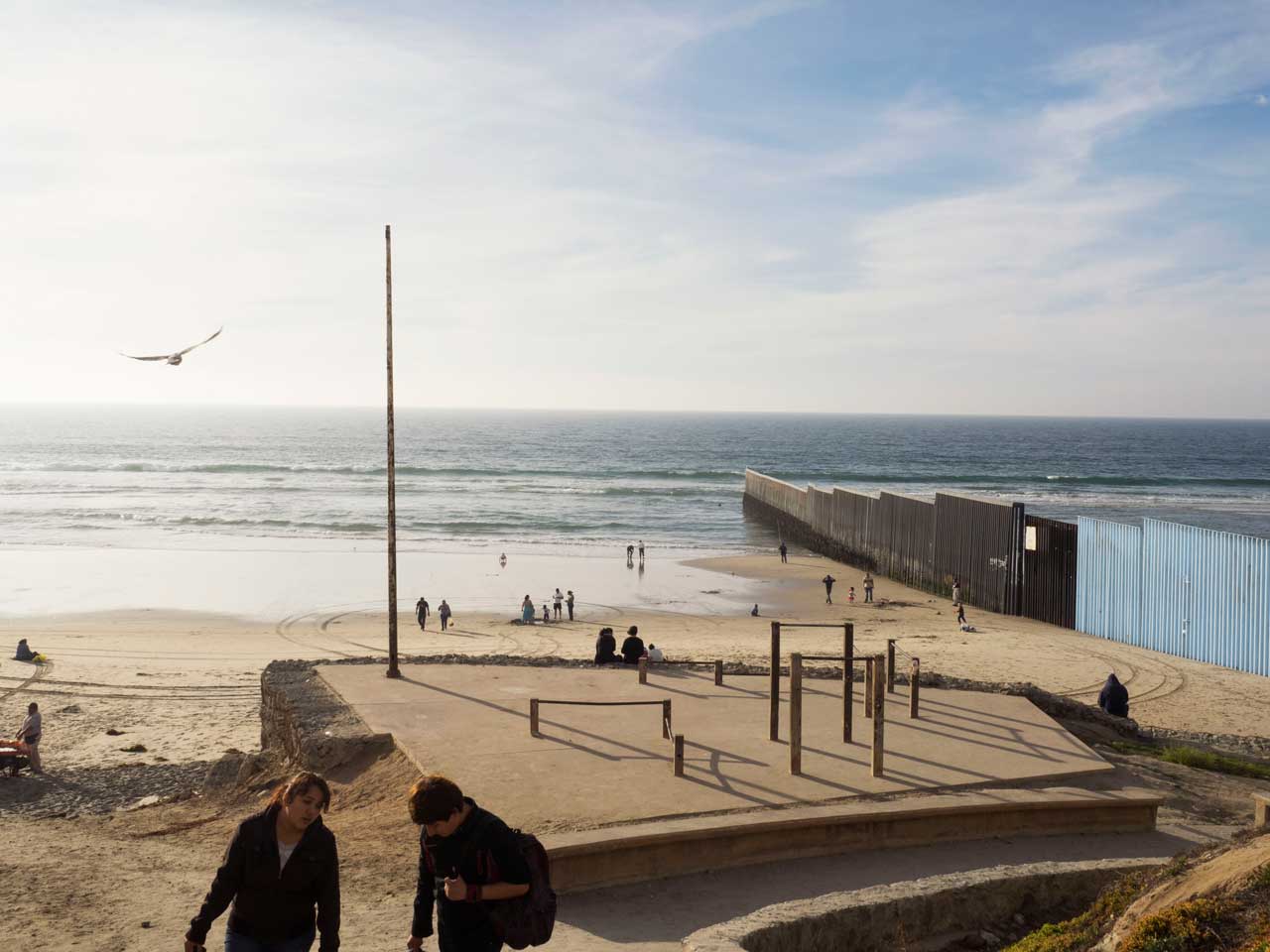




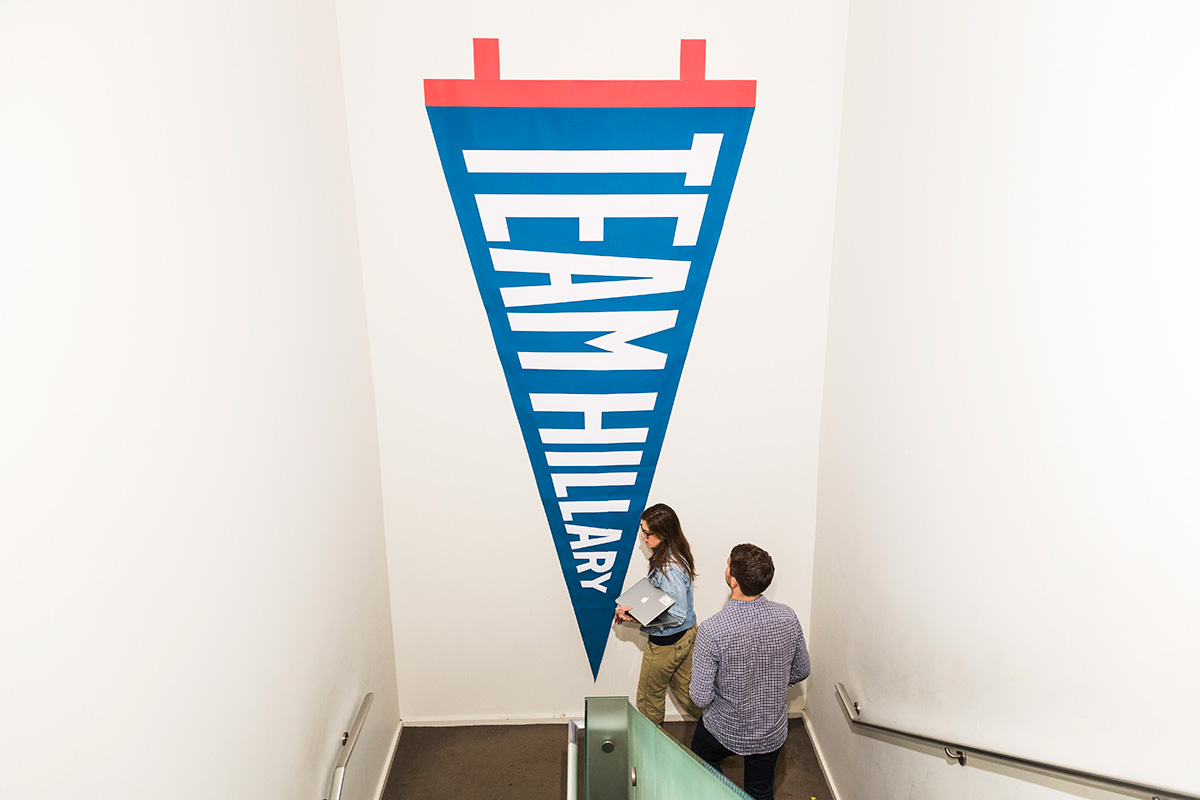


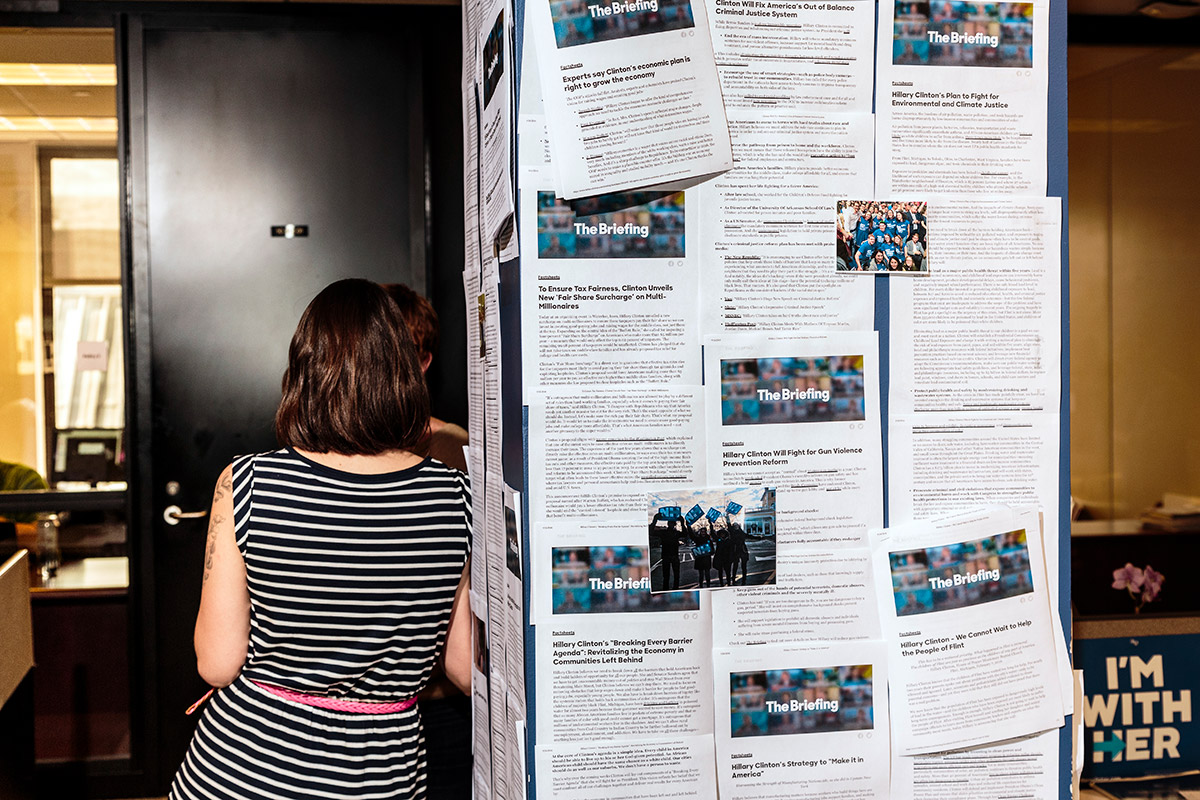
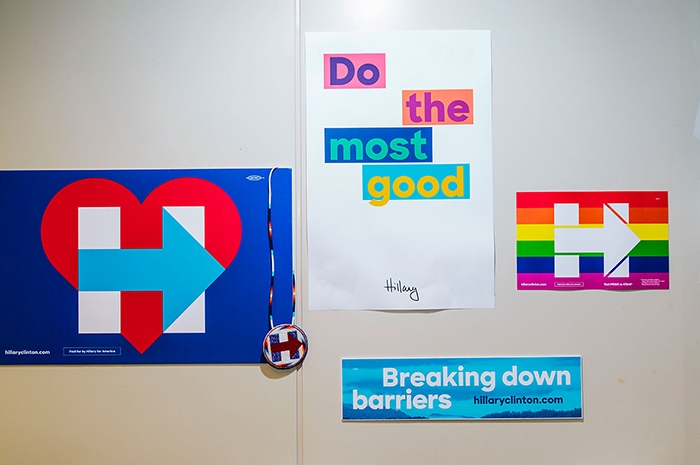






































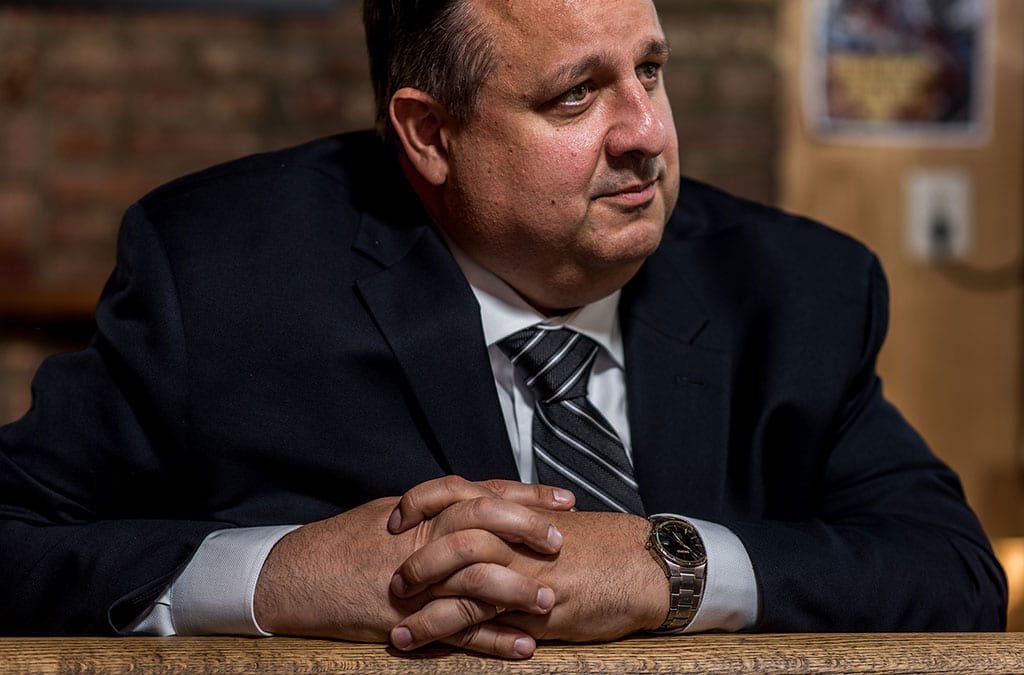





 And then there’s health care.
And then there’s health care.